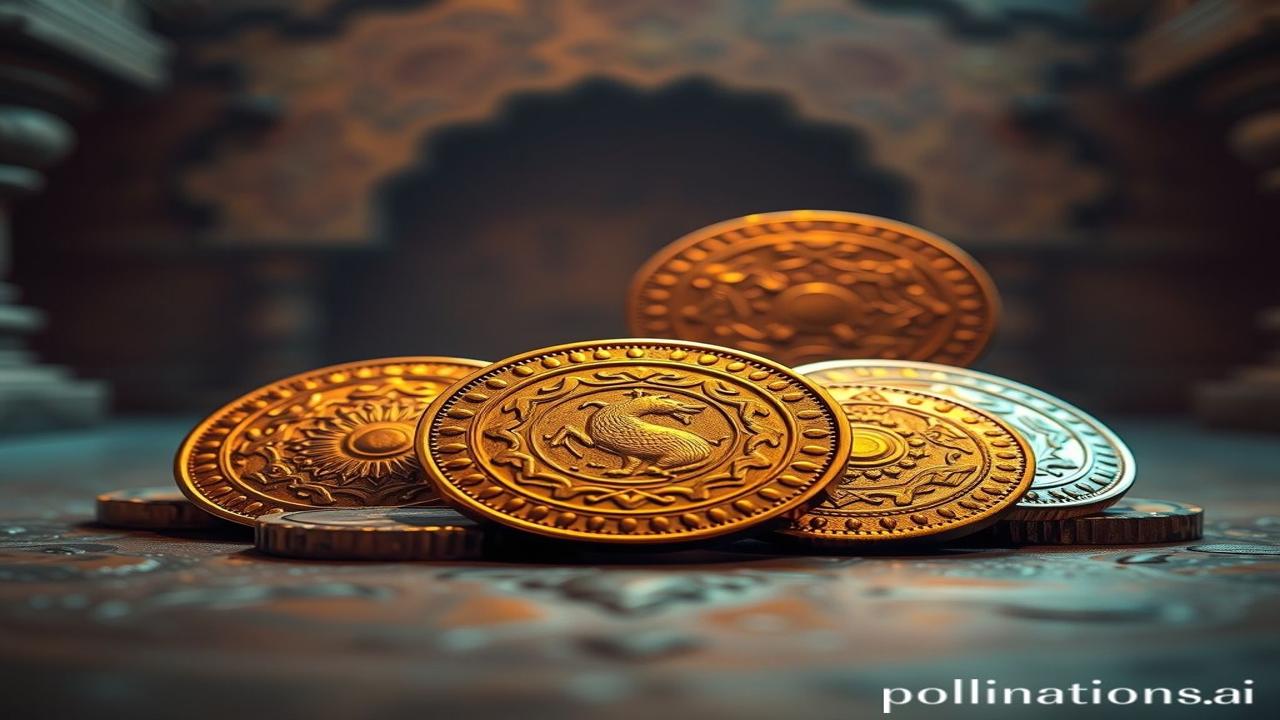Okay, let’s dive into the shimmering world of ancient Indian coinage!
सिक्कों की कहानी, भारत की जुबानी: Unearthing the Echoes of Ancient Indian Coins
Kabhi socha hai, ek chote se sikke mein kitni kahaniyan chupi hoti hain? Just imagine holding a coin that’s centuries old, feeling the weight of empires and the dreams of forgotten kings in your palm. Woh sirf ek metal ka tukda nahi hai; it’s a portal to a vibrant past, a whisper from the bazaars and battlefields of ancient India. This blog post is about unearthing that history, one coin at a time.
History Ke Patte: The Roots of Ancient Indian Coinage
What are we even talking about when we say “ancient Indian coinage?” Basically, we’re talking about the first forms of money used in the Indian subcontinent, dating back as early as the 6th century BCE. These weren’t the shiny, perfectly round coins we’re used to today. These were mostly punch-marked coins – imagine someone literally hammering designs into pieces of metal!
Where and When?
- The Early Days (6th Century BCE): Think of the Mahajanapadas – the powerful kingdoms like Magadha, Kosala, and Avanti. This is where things started to heat up.
- The Mauryan Empire (322-185 BCE): Chandragupta Maurya and his successors standardized coinage to a large extent. Silver punch-marked coins became the currency of the realm.
- The Indo-Greeks (2nd Century BCE): They brought in Hellenistic influences, introducing die-struck coins with images of kings and Greek deities. This was a big shift!
- The Kushanas (1st-3rd Century CE): These guys used gold coins extensively, which reflected their prosperity and trade links with the Roman Empire.
Why is it important?
Ancient Indian coinage is HUGE for understanding our history for so many reasons:
- Economic Insights: It tells us about trade routes, the power of different kingdoms, and economic prosperity (or lack thereof).
- Political Power: The designs on the coins – rulers’ portraits, emblems, and inscriptions – showed who was in charge and what they valued.
- Religious Beliefs: The gods and goddesses depicted on coins give us clues about the dominant religious beliefs of the time.
- Artistic Expression: These coins are miniature works of art, reflecting the artistic skills and aesthetic sensibilities of the ancient Indians.
ज़मीनी सच: A Day in the Life – Coins and Kings
Imagine a bustling market in Pataliputra (modern-day Patna) during the Mauryan era. A farmer haggles with a merchant over the price of grain, finally agreeing on a handful of silver punch-marked coins. These coins, called Karshapanas, bear the symbols of the Mauryan Empire – the elephant, the hill, and the tree.
Or picture King Kanishka of the Kushan dynasty, meticulously choosing the design for his gold coins. He wants to depict himself as a powerful ruler, so he includes his own image along with depictions of various deities – Buddha, Shiva, and even Greek gods like Helios. These coins aren’t just money; they’re propaganda!
Ma Rukmini ne aaj naye kapde pehne, kyunki mandir mein utsav tha. She carefully counted out her copper coins, hoping to buy some sweets for her children. Each coin, worn smooth by countless hands, told a silent story of daily life, of the joys and struggles of ordinary people.
धरोहर और पहचान: Echoes of the Past in Modern India
Even today, the legacy of ancient Indian coinage lives on.
- Numismatics: Coin collecting is a popular hobby and a serious field of study, helping us preserve and understand our past.
- Museums: Museums across India proudly display these ancient coins, allowing us to connect with our heritage.
- Art and Design: Ancient coin designs often inspire modern artists and designers, who incorporate these motifs into their creations.
The concept of Lakshmi – the goddess of wealth and prosperity – is deeply rooted in the ancient Indian understanding of coinage. Coins were not just a means of exchange; they were symbols of Shakti and abundance. That connection between money and spirituality continues to resonate in Indian culture today. When we celebrate Diwali, Lakshmi Puja is incomplete without coins, symbolising prosperity and well-being.
मजेदार तथ्य: Myth vs. Reality
Myth: All ancient Indian coins were made of silver.
Reality: While silver was a common metal, ancient Indians also used copper, gold, lead, and even potin (a mixture of metals) for their coins, depending on the region and the ruling dynasty. The availability of materials influenced the composition.
दृश्य और भावनाएं: Sensory Overload
Imagine the air in Taxila (modern-day Pakistan) during the Indo-Greek period. The scent of spices mingled with the smell of freshly minted silver. The sounds of hammers striking metal echoed through the workshops. The feel of a newly minted coin, still warm from the forge, in your hand.
The temple walls, adorned with intricate carvings, seemed to vibrate with the energy of the gods depicted on the coins. The chants of the priests blended with the clinking of coins as offerings were made.
अंतिम विचार: A Timeless Treasure
Ancient Indian coins are more than just pieces of metal. They are tangible links to our past, whispering stories of kings and commoners, of trade and religion, of art and culture. They remind us of the enduring legacy of Bharatiyata and the rich tapestry of our history.
“अयं निजः परो वेति गणना लघुचेतसाम् । उदारचरितानां तु वसुधैव कुटुम्बकम् ॥” (Ayam Nijah Paro Veti Ganana Laghuchetasam, Udaracharitanam Tu Vasudhaiva Kutumbakam) – “This is mine, that is yours” is the calculation of the narrow-minded. For those of noble character, the entire world is but one family.” Just as each coin contributed to the vibrant economic ecosystem of ancient India, each one of us has a role to play in building a prosperous and harmonious future. Let’s learn from the past and strive to create a world where Vasudhaiva Kutumbakam is not just a saying, but a reality.
